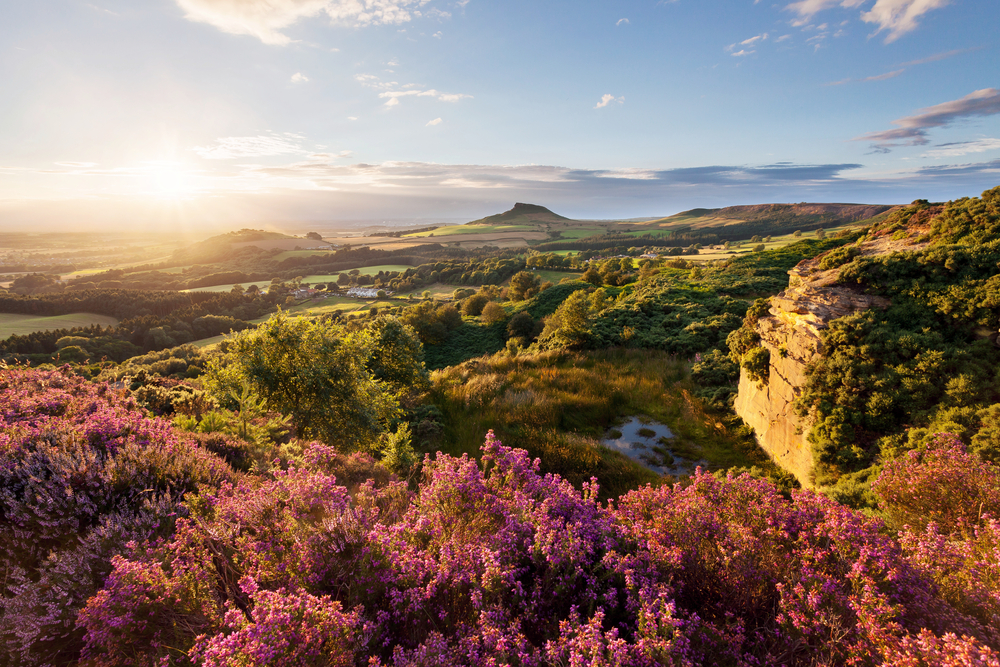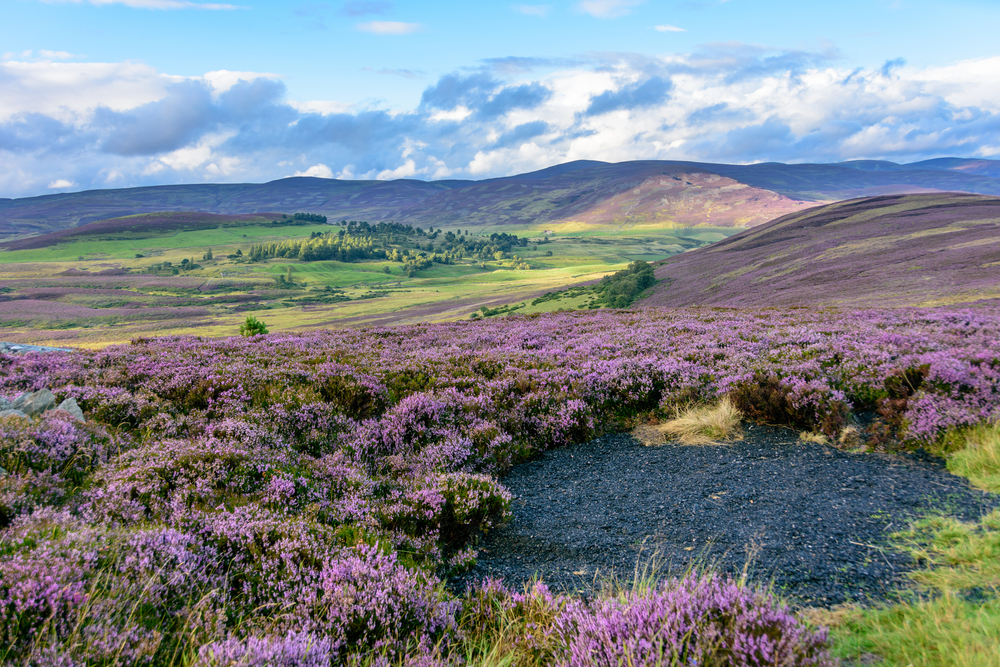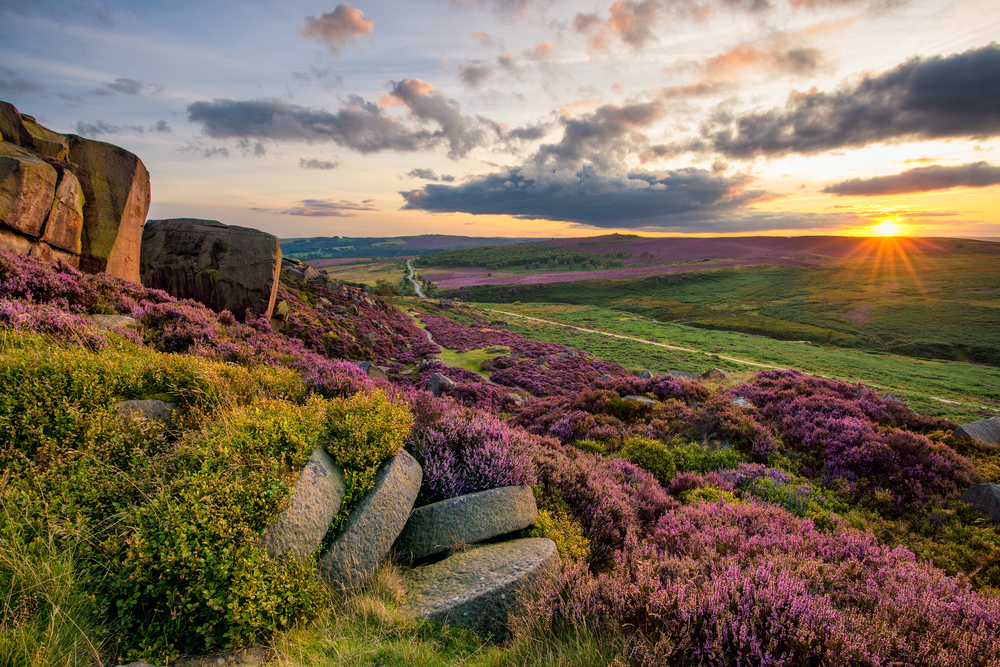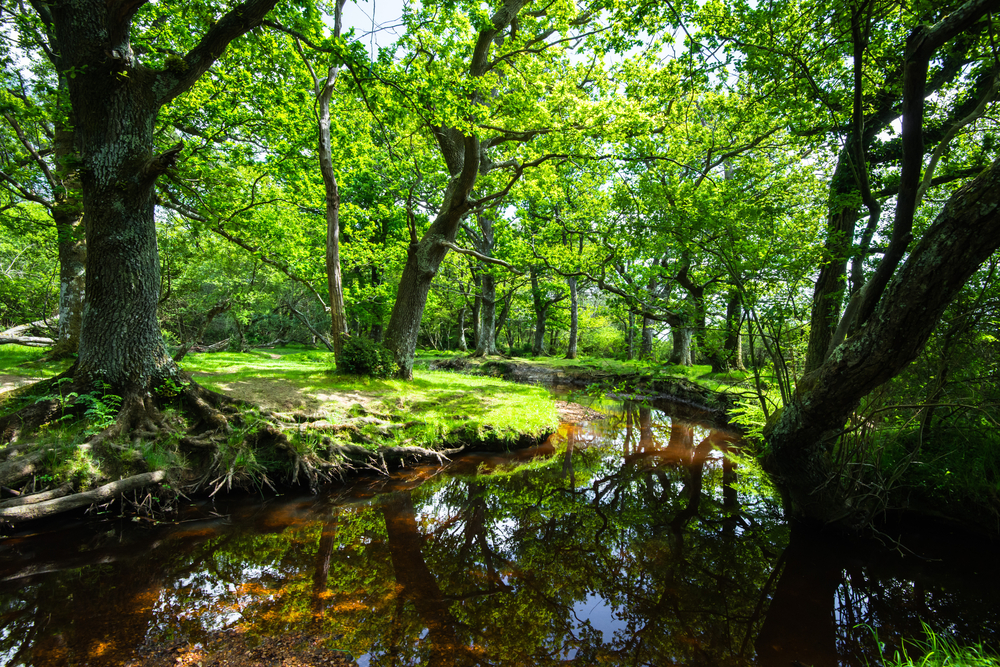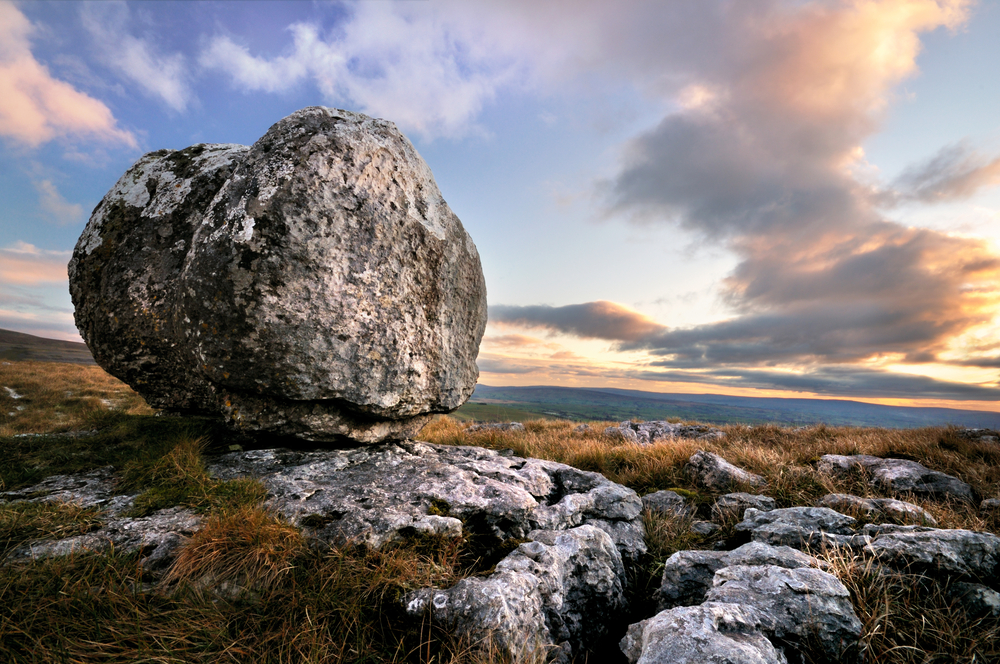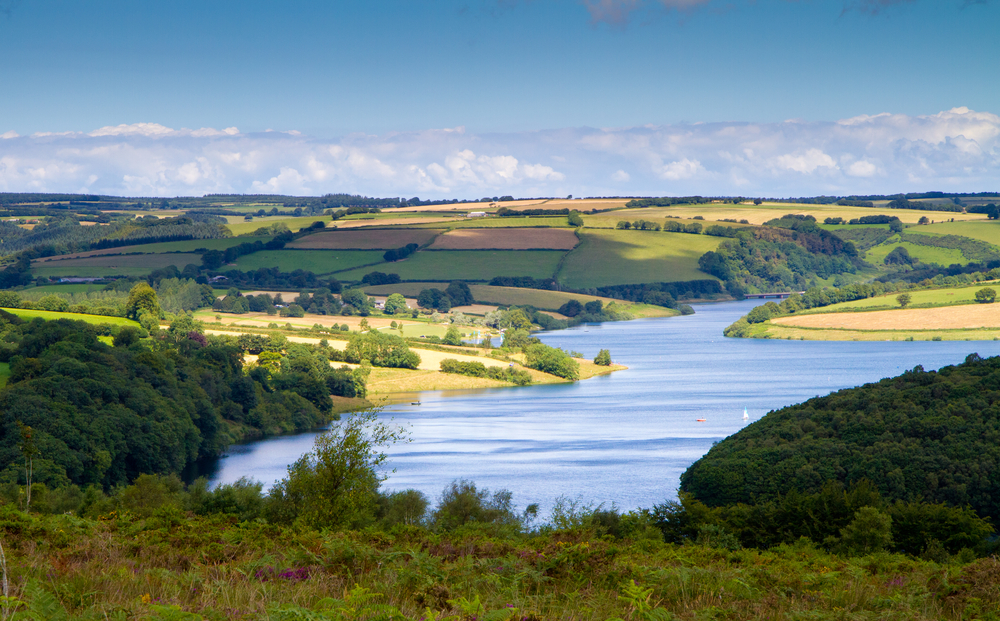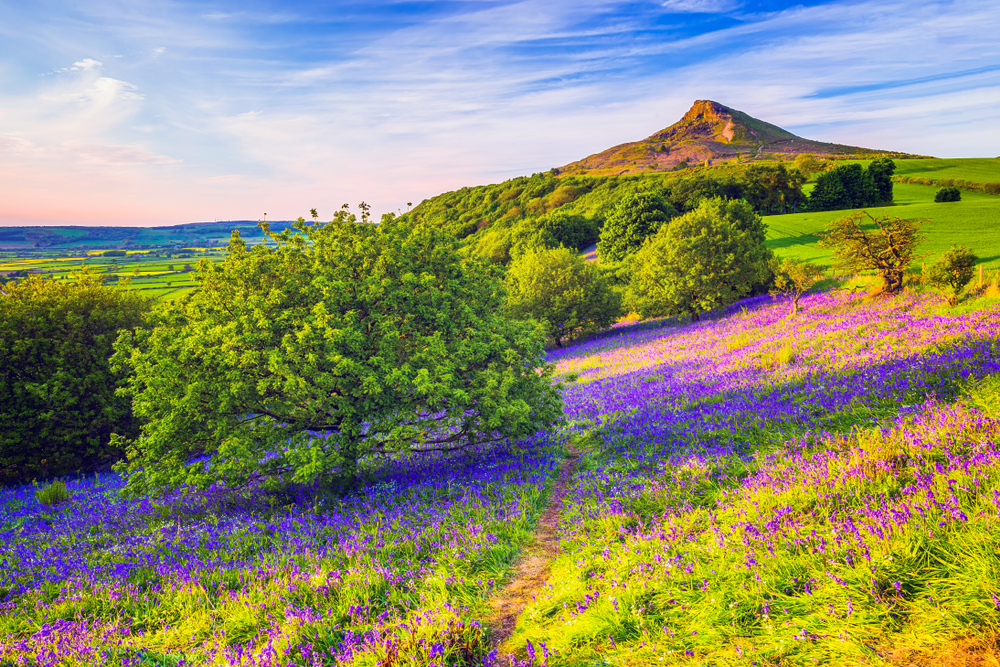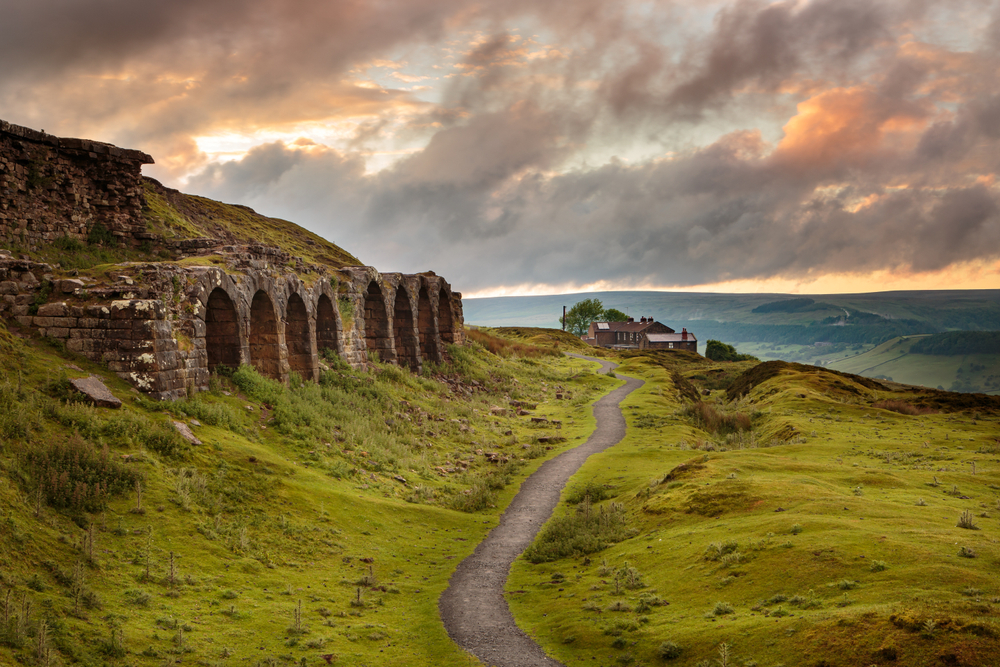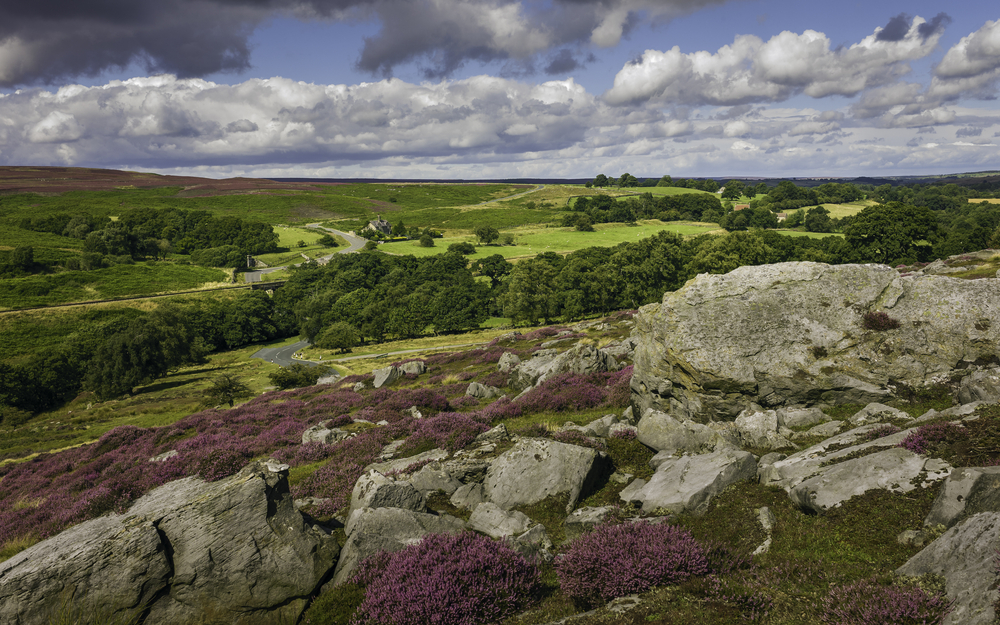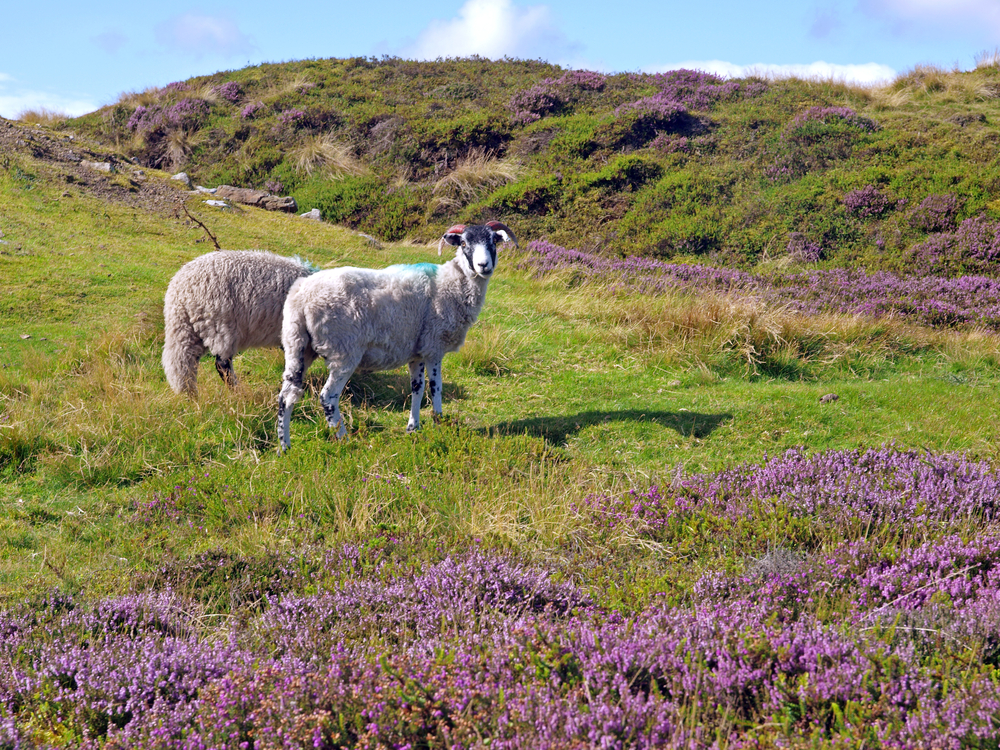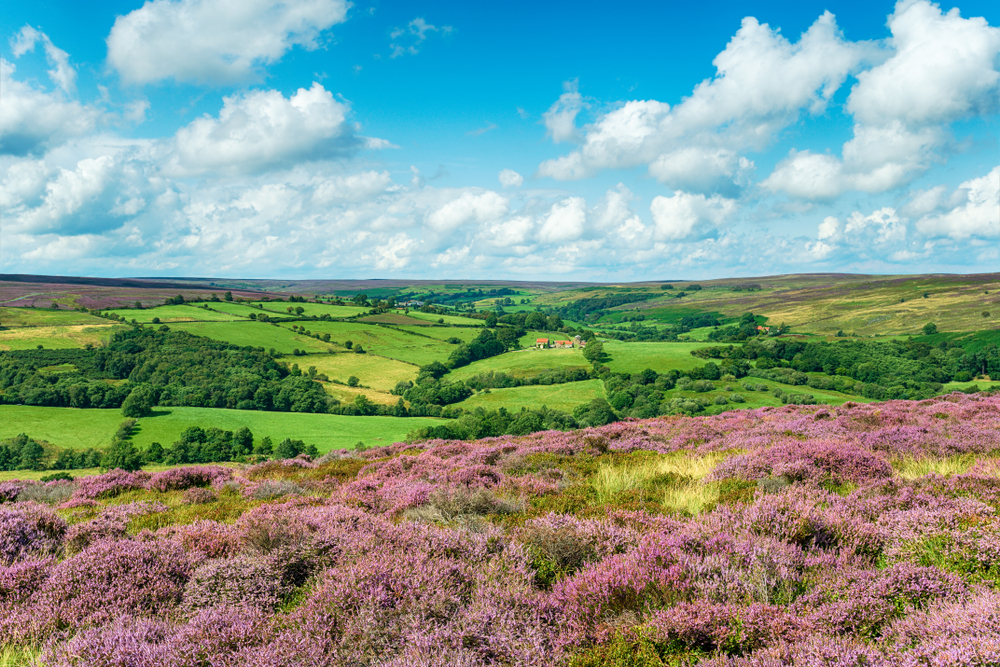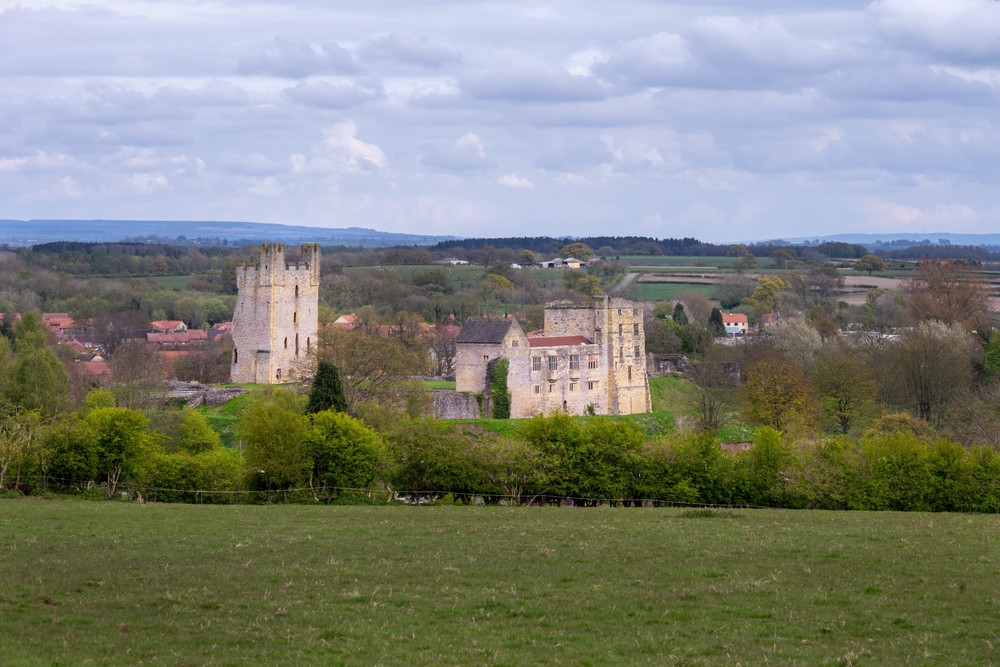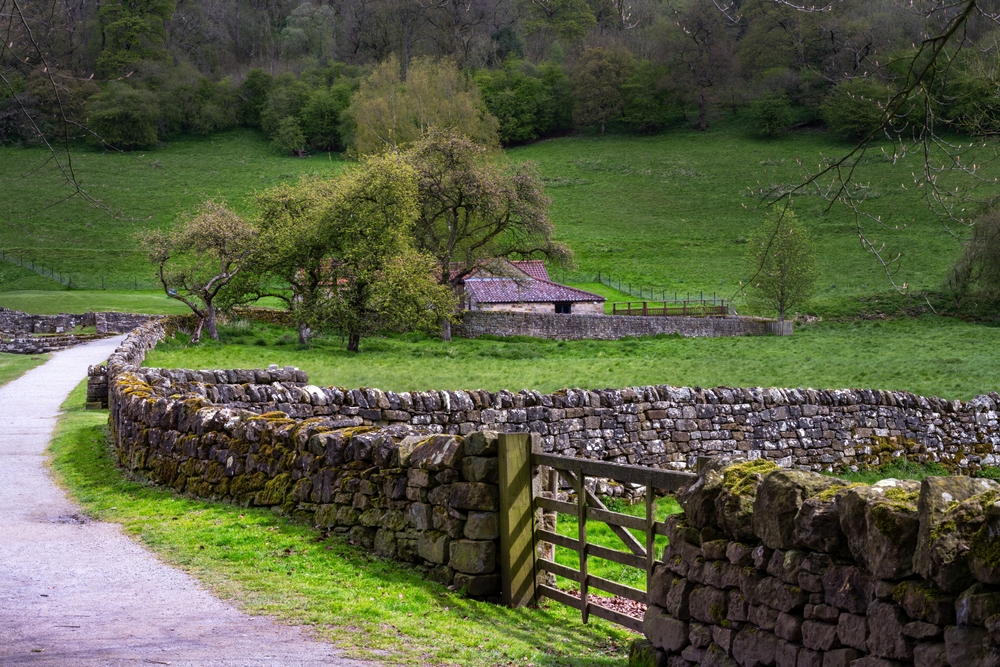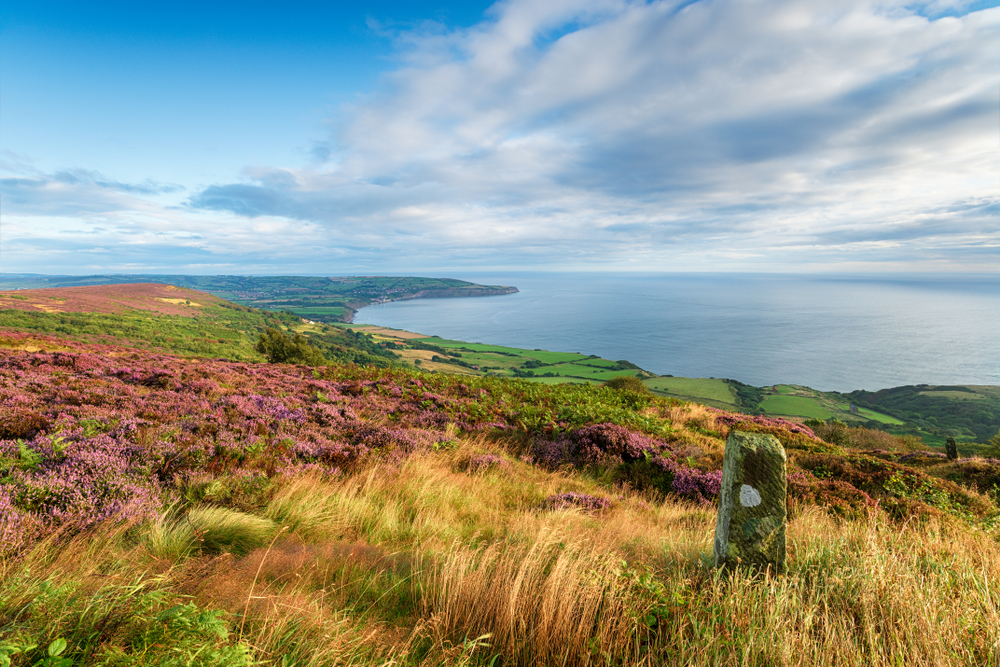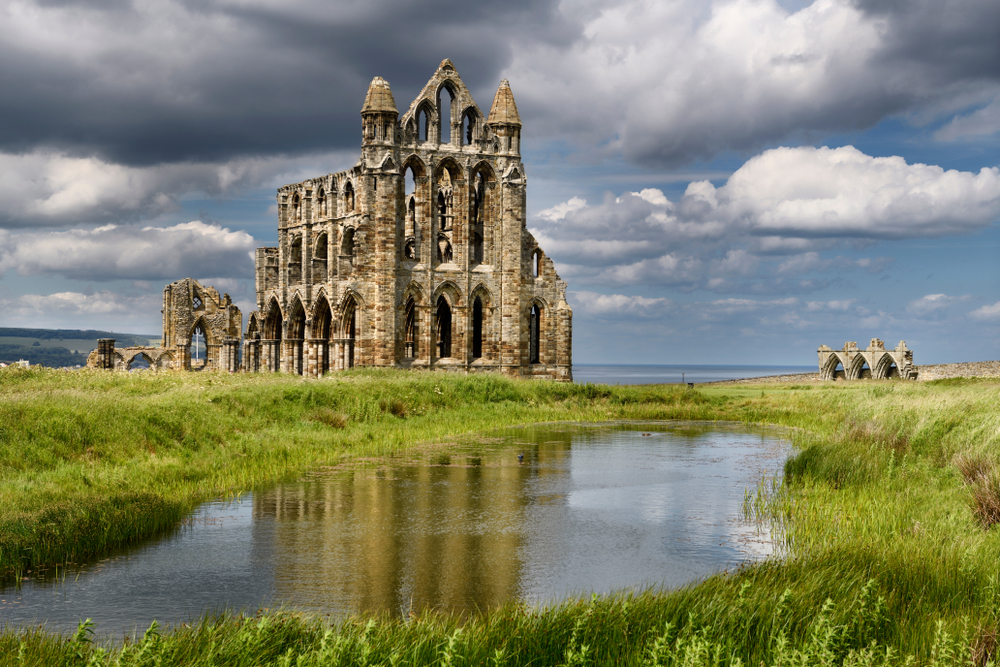North York Moors Overview
North York Moors National Park is located in North Yorkshire, in northern England, and is one of the UK’s most treasured national parks. Established in 1952, it covers an area of approximately 554 square miles (1,436 square kilometers), offering a stunning mix of rolling hills, vast heather moorlands, deep valleys, and a dramatic coastline along the North Sea.
The landscape of North York Moors is characterized by its expansive heather moorlands, which cover around one-third of the park. During late summer, the moors turn vibrant purple as the heather blooms, creating one of the most iconic sights in the UK. The park also features deep, wooded valleys known as “dales,” which cut through the moorlands, and several picturesque rivers like the Esk and the Rye. Along the eastern edge, the park meets the North Sea with a rugged, scenic coastline dotted with historic fishing villages like Robin Hood’s Bay and Staithes.
The vegetation in the park is dominated by heather, particularly ling and bell heather, but there are also significant areas of ancient woodlands filled with oak, birch, and rowan trees. The coastal cliffs and valleys are home to wildflowers such as thrift, bluebells, and orchids. The mix of moorland, woodland, and coastal habitats creates a unique mosaic of vegetation, supporting a variety of ecosystems.
The wildlife in North York Moors National Park is equally diverse. The park is home to iconic bird species such as the red grouse, which thrives in the heather moorlands, and merlins, the UK’s smallest bird of prey. Deer, foxes, and badgers are common in the woodlands, while the rivers and streams support otters and kingfishers. The coastline is important for seabirds like puffins and kittiwakes, and the park’s rich habitats provide a haven for various amphibians, reptiles, and rare butterflies, making North York Moors a vital area for conservation and biodiversity.
Park Map
North York Moors National Park Highlights
Engaging North York Moors
Sources
- Discover Yorkshire Coast, North York Moors, https://www.discoveryorkshirecoast.com/north-york-moors/, retrieved August 2024.
- Park Site, North York Moors, https://www.northyorkmoors.org.uk/, retrieved August 2024.
- Visit Britain, North York Moors, https://www.visitbritain.com/en/destinations/england/north-york-moors, retrieved August 2024.
- Visit England, Places to Visit in North York Moors, https://www.visitengland.com/things-to-do/north-york-moors, retrieved August 2024.
- Visit York, North York Moors National Park, https://visityork.org/north-york-moors-national-park, retrieved August 2024.








































































